The Ruger 10/22 is an iconic rifle, and even 55 years after its introduction, it’s still regarded as one of the best semi-automatic 22 Rimfire rifles made. Further to this, the basic design has barely changed over the years – testament to the fact it was pretty good in the first place. That said, when you make a product that’s good, it’s a sure bet in this day and age, someone will copy it; after all, why spend all that money on R&D and design when you can use something that’s already proven? But what if you can take that proven design and add something … is it worth straying from the original?
New Zealand Thompson/Center (T/C) distributor JPB Furley and Co – who I might add are the NZ Ruger agents – sent me a T/CR22 for review. Now, T/C aren’t the first company to clone the 10/22, so I was curious as to how an organisation with the financial might of Smith & Wesson (who own T/C ) would approach this design project – cheap and cheerful, high class, or perhaps a direct shot at Ruger?
Design
The first thing you notice with the T/CR is the stock; it looks like a Magpul X-22 stock, and the reason it looks similar is because it’s made by Magpul. Think of it as a simplified X-22; no length adjustment or cheek riser and it also misses out on the sling loops and M-LOK slots on the side. It does have M-LOK slots underneath, which is good, but it misses out on sling swivel studs, instead having moulded in sling Q/D holes which means if you want to run a bipod, you’ll have to fit an adapter to the M-LOK slots underneath – no big deal, but it’s just another thing you have to buy.
The stock is, however, very comfortable and a step up from the basic Ruger 10/22 synthetic stock. Like the X-22 stock, the forend insert is removable if you decide to fit a heavy barrel, but unlike the X-22, there’s no replacement insert, so you lose your M-LOK slots when you take it out.
Looking at the receiver, you’ll notice the Picatinny rail is integral and the charging handle is a knurled cylinder which is definitely nicer than the old-style 10/22 handle. At the back of the receiver is an adjustable peep sight that increases the sight radius for better accuracy. The barrel is a standard sporting contour; the front sight is a very useable fibre optic, and the muzzle is threaded (1/2 x 28) for a suppressor.
T/C make their own version of the famous 10-shot rotary magazine, but it has a very useful upgrade – a tab for a last-shot bolt hold-open. That’s right – after 55 years, we finally get this useful design feature! The magazine tab pushes on a lever inside the receiver, and after the last shot, the bolt stays open – a nice feature now that 10-round magazines are the largest we can own. Note the T/C mag will work in a 10/22 and vice versa, but the T/C mag won’t hold the bolt back in a Ruger as it has no hold-open device on the bolt. T/C also made the rear of the magazine transparent allowing you to see how many rounds are in the magazine … nice!
The trigger is a standard 10/22 type that broke at around 4.5 pounds and had a small amount of take up and creep; not a bad trigger … just not awesome. It’s a bit better than the standard 10/22 trigger; my 1966 10/22 still has a 5.5-pound pull that isn’t what you’d call crisp. The safety is the usual cross-bolt system that blocks the trigger. To me, this rifle is getting pretty close to a perfect all-round 10/22, and if it had a trigger like the Ruger BX, then just about every box would be ticked. All in all, it’s a very attractive rifle, and the stock certainly makes it look modern and purposeful.

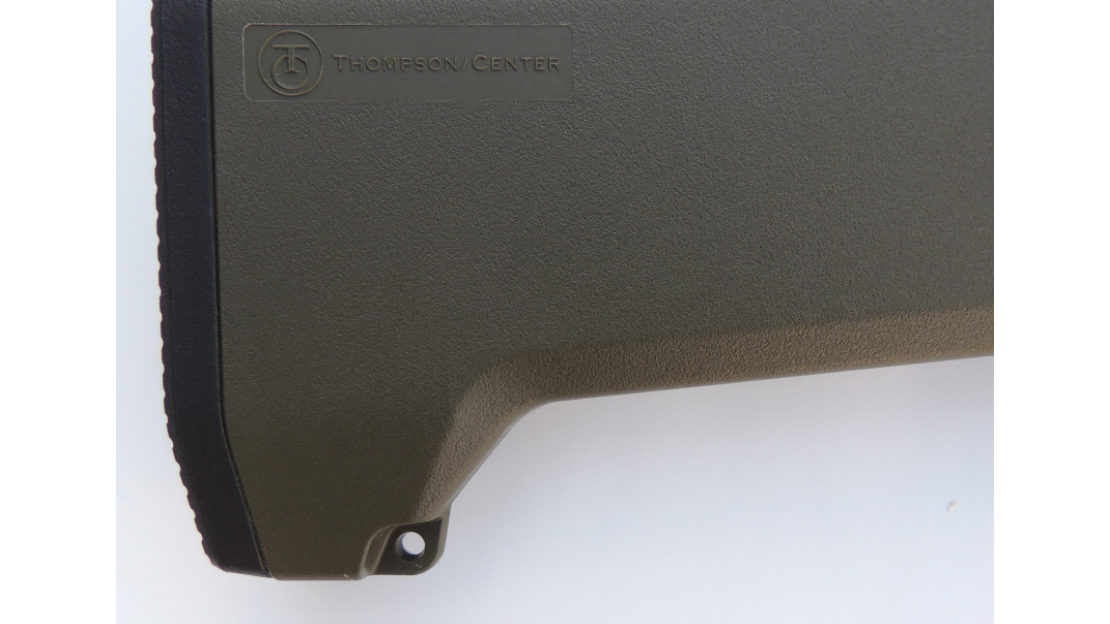
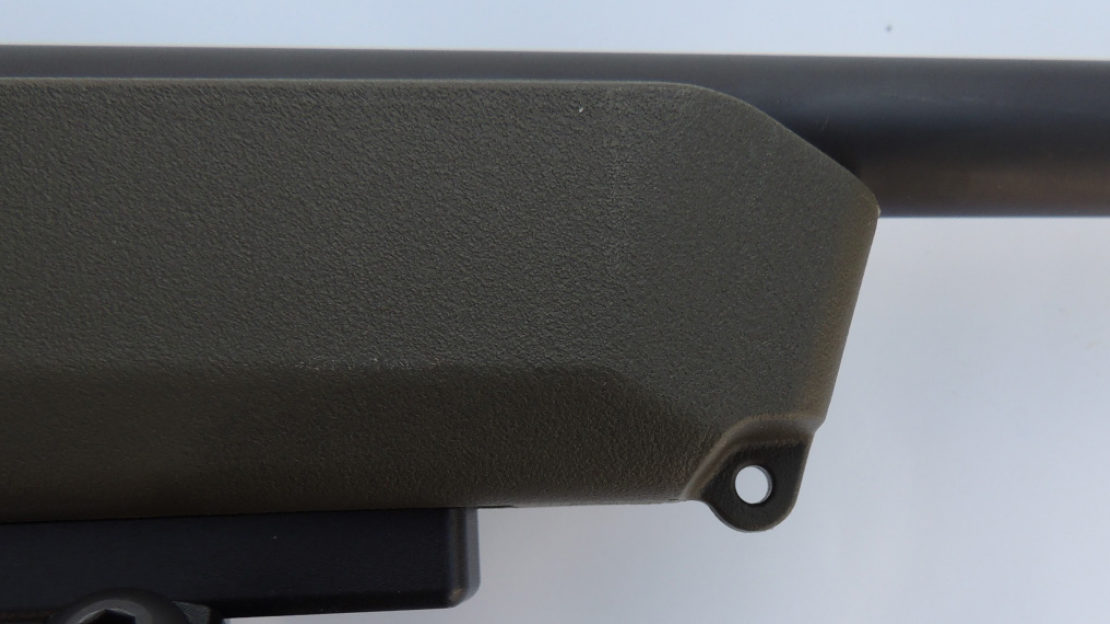
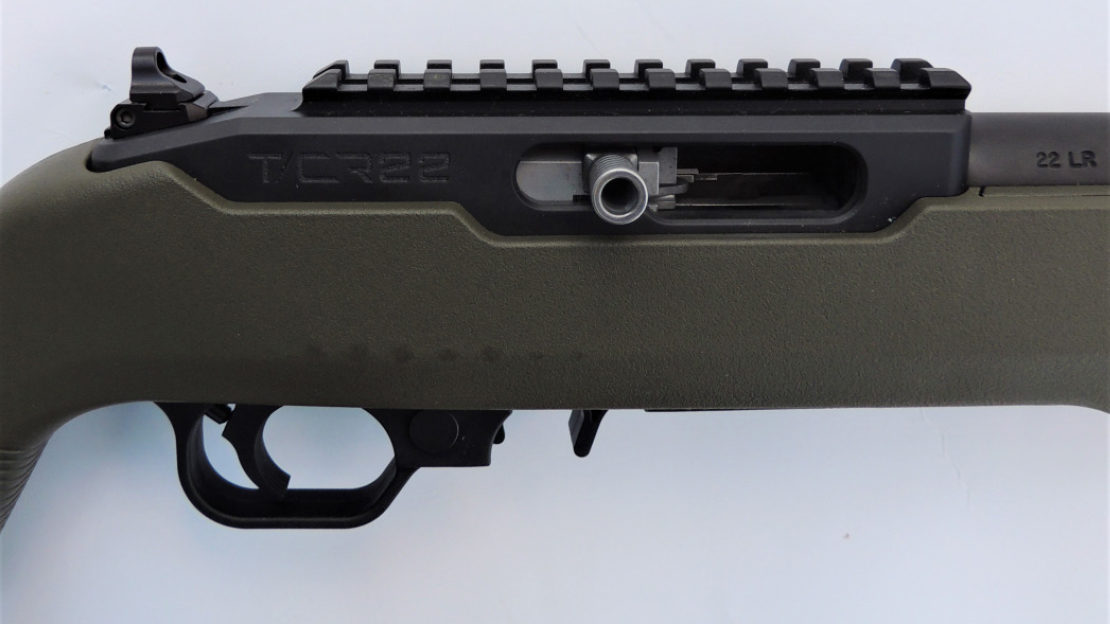
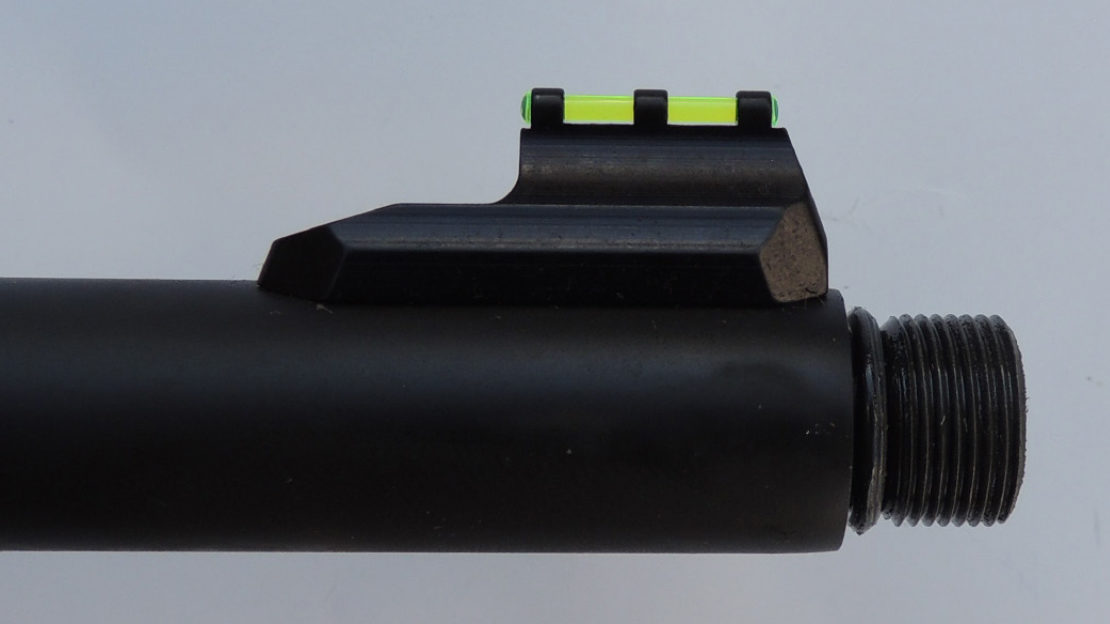

Testing
The Magpul stock is a real winner when it comes to feel; when I picked the rifle up for the first time, I immediately felt comfortable – ergonomically, this stock is very good. If I was being picky, I’d like the comb to be a bit higher for scope use, but I realise the stock is a compromise so the open sights can be used as well as a scope. It is, however, a compromise I could live with; with a scope fitted, the cheek weld is fine and better than the Ruger synthetic stock. The controls are just like a 10/22 with the exception of the bolt hold-open which is much easier to use than the Ruger system. This is actually quite important from a safety perspective, as looking into an empty chamber is one of the easiest safety checks one can perform; this has real merit when teaching new shooters how to make the firearm safe.
For testing purposes, the rifle was fitted with a Swarovski Z3 scope and a suppressor. Ammunition used was CCI Blazer, Winchester Power-Point Max and Power-Point Subsonic, Fiocchi Sport and F320, and Norma Jaktmatch; all testing was done at 50m on a day with variable wind. The best group was with Norma Jaktmatch at 15mm; next up was Fiocchi F320 at 21mm followed by the Winchester Power-Point Subsonic at 28mm. CCI Blazer shot 30mm and Winchester Power-Point Max grouped at 33mm. Overall, I was pleased with the groups, but a few promising groups were upset by a rogue shot most likely due to the wind or the slightly creepy trigger. I fired just short of 500 rounds through the T/CR22 and had only one failure to feed. It was encouraging to note the rifle had no problem cycling subsonic loads. The magazine requires a little bit of fiddle to get the first round in due to the bolt hold-open; you need to press down on the hold-open lever and wiggle the rim into the magazine. It’s not difficult, by any means, but there’s a technique that needs to be followed.
I shot at targets out to 120m and then fitted a Caldwell Accumax carbon fibre bipod and went for a hunt. The Accumax bipod had an M-LOK adapter and was a nice fit on the rifle. At only 250 grams, the bipod didn’t unbalance the T/CR22, and it was a pleasure to carry in the field. The bipod was nice to use and was easily adjustable in all directions with an easy-to-operate lever that allowed cant swivel and tilt but locked it up tight with only a small movement. Unfortunately, no rabbits or hares dared show themselves, so I had to amuse myself plinking at rocks and sticks.
Conclusion
With a retail price of $799, the T/CR22 isn’t a cheap Rimfire but it has enough upgrades to lift it above its immediate competition. The stock and the bolt hold-open were highlights for me, and nice extras like the integral Picatinny rail and very useable open sights just add to the appeal. I can’t help but think this rifle needs an improved trigger; it’s a wee bit better than a standard 10/22 trigger, but when the rest of the package is raising the bar, a better trigger would make it just that much nicer. Accuracy-wise, it showed plenty of potential, and when the wind dropped, some very good groups were shot. The threaded muzzle was fitted with an O-ring to keep the suppressor seated, and shooting subsonic loads showed no failures – something not all semi-auto 22s can achieve. The T/CR22 is around $250 more than a similarly specified 10/22; is it worth it? I say yes.
Specifications
Calibre: .22LR
Finish: Blued with OD green stock
Barrel: 17 inches 1/15 twist, threaded
Magazine: 10-shot rotary with bolt hold-open
Length: 35 inches (889mm)
Sights: Open with fibre optic front sight. Integrated Picatinny rail
Weight: 34.4 pounds (2kg)
RRP
$799.00

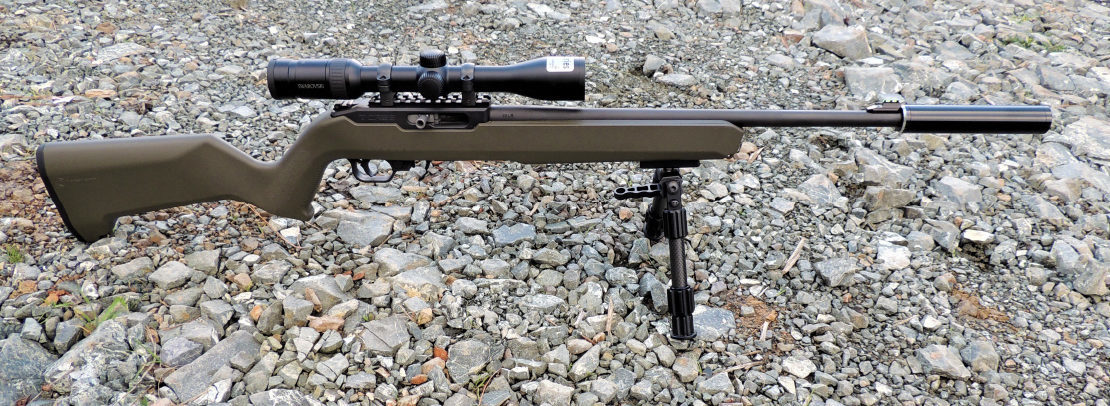
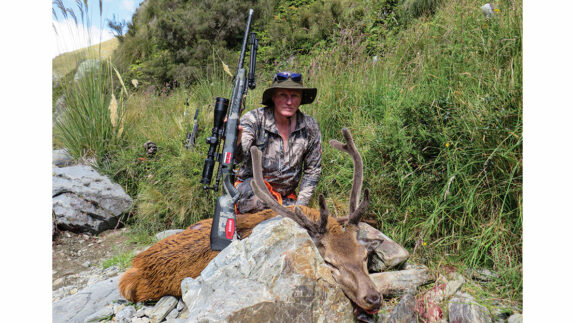




SHARE YOUR BEST PICS #NZRODANDRIFLE